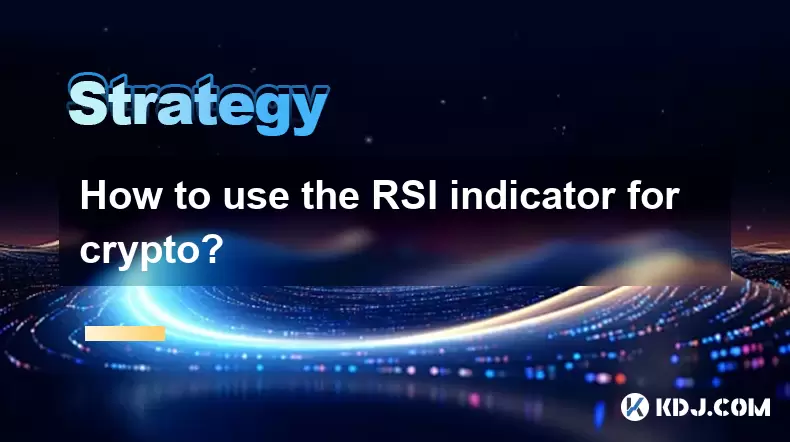-
 Bitcoin
Bitcoin $118900
0.42% -
 Ethereum
Ethereum $3710
-2.88% -
 XRP
XRP $3.513
-2.96% -
 Tether USDt
Tether USDt $1.000
-0.01% -
 Solana
Solana $203.0
3.65% -
 BNB
BNB $765.5
-1.29% -
 USDC
USDC $0.9998
0.00% -
 Dogecoin
Dogecoin $0.2671
-4.18% -
 Cardano
Cardano $0.8817
-3.63% -
 TRON
TRON $0.3139
-0.64% -
 Hyperliquid
Hyperliquid $44.34
-5.45% -
 Stellar
Stellar $0.4637
-4.08% -
 Sui
Sui $3.908
-2.59% -
 Chainlink
Chainlink $19.34
-2.62% -
 Hedera
Hedera $0.2712
-3.77% -
 Avalanche
Avalanche $24.97
-4.13% -
 Bitcoin Cash
Bitcoin Cash $519.8
-1.48% -
 Shiba Inu
Shiba Inu $0.00001518
-3.74% -
 Litecoin
Litecoin $115.6
-2.21% -
 Toncoin
Toncoin $3.460
3.68% -
 UNUS SED LEO
UNUS SED LEO $8.977
-0.07% -
 Polkadot
Polkadot $4.460
-2.96% -
 Uniswap
Uniswap $10.53
-5.43% -
 Ethena USDe
Ethena USDe $1.001
0.01% -
 Monero
Monero $323.6
-0.36% -
 Pepe
Pepe $0.00001379
-2.60% -
 Bitget Token
Bitget Token $4.772
-3.90% -
 Dai
Dai $0.9999
0.00% -
 Aave
Aave $307.5
-6.66% -
 Bittensor
Bittensor $441.8
0.84%
How to use ATR to determine Bitcoin volatility?
Bitcoin's Average True Range (ATR) measures volatility, not price direction, showing the magnitude of price swings. Higher ATR values signal greater risk and necessitate adjusting position sizes for effective risk management.
Mar 21, 2025 at 02:00 pm

Key Points:
- The Average True Range (ATR) indicator helps measure Bitcoin's volatility, not its price direction.
- ATR focuses on the range of price fluctuations, providing a gauge of price swings' magnitude.
- Higher ATR values indicate higher volatility, while lower values suggest lower volatility.
- Understanding ATR helps traders manage risk and adjust position sizes accordingly.
- Different timeframes offer varying perspectives on Bitcoin's volatility.
How to Use ATR to Determine Bitcoin Volatility
The Average True Range (ATR) is a technical indicator widely used in trading to gauge market volatility. In the context of Bitcoin, the ATR helps traders understand the magnitude of price swings over a specific period. It doesn't predict price direction, only the extent of price fluctuations. This is crucial for risk management in the often volatile cryptocurrency market.
Understanding the ATR calculation is key to its effective use. The ATR isn't a standalone indicator; it relies on other data points. The True Range (TR) is the core component. The TR is the greatest of three values: the current high minus the current low, the absolute value of the current high minus the previous close, and the absolute value of the current low minus the previous close. The ATR is then calculated as a moving average of the True Range, typically a 14-period simple moving average. This provides a smoother representation of volatility over time.
To use the ATR to determine Bitcoin's volatility, you'll need a charting platform that provides technical indicators. Most popular charting platforms, such as TradingView, offer the ATR as a standard indicator. Simply add the ATR indicator to your Bitcoin chart, selecting your preferred timeframe (e.g., 1-hour, 4-hour, daily). The ATR value will be displayed, usually as a separate line below the price chart.
A higher ATR value indicates greater volatility. For example, an ATR of 1000 USD suggests larger price swings compared to an ATR of 100 USD. This difference highlights the significance of understanding the context of the ATR value. The interpretation is relative to the price of Bitcoin itself. A high ATR value in a bear market might still represent lower volatility compared to a bull market. This makes analyzing the ATR in conjunction with other indicators essential.
The timeframe you choose significantly impacts the ATR value. A shorter timeframe (e.g., 1-hour) will show more immediate, short-term volatility fluctuations. Conversely, a longer timeframe (e.g., daily or weekly) will depict a smoother, long-term volatility trend. Traders should select a timeframe that aligns with their trading strategy and investment horizon. A day trader might focus on a shorter timeframe, while a long-term investor might use a longer one.
Implementing the ATR into your trading strategy involves using it to manage risk. Higher ATR values signal greater potential for significant price movements, both up and down. This suggests a need for smaller position sizes to limit potential losses. Conversely, lower ATR values indicate less volatile periods, potentially allowing for larger positions with reduced risk.
Adjusting position sizes based on ATR values is a key aspect of risk management. Traders can use the ATR to determine stop-loss levels. For instance, a stop-loss order could be placed 2 or 3 times the ATR below the entry price, limiting potential losses during volatile periods.
Different types of moving averages can be used to calculate the ATR. While a simple moving average is common, exponential moving averages or weighted moving averages could also be employed. The choice depends on individual preferences and the desired responsiveness of the indicator. Experimentation is key to finding what works best.
Analyzing the ATR in conjunction with other indicators is crucial. It shouldn't be the sole indicator driving trading decisions. Combining it with price action analysis, support and resistance levels, and other technical indicators provides a more comprehensive understanding of the market dynamics.
Frequently Asked Questions:
Q: What does a high ATR value for Bitcoin mean?
A: A high ATR value indicates that Bitcoin's price is experiencing larger swings and is therefore more volatile. This suggests greater risk but also potentially higher reward for traders.
Q: How can I use ATR to set stop-loss orders?
A: You can set your stop-loss order a multiple (e.g., 2x or 3x) of the current ATR value below your entry price. This helps protect against significant losses during periods of high volatility.
Q: Which timeframe is best for using ATR with Bitcoin?
A: The optimal timeframe depends on your trading strategy. Shorter timeframes (e.g., 1-hour) show short-term volatility, while longer timeframes (e.g., daily) reflect long-term trends.
Q: Can ATR predict the direction of Bitcoin's price?
A: No, ATR only measures the volatility of price movements, not their direction. It doesn't predict whether the price will go up or down.
Q: What are the limitations of using ATR?
A: ATR is a lagging indicator, meaning it reacts to past price movements rather than predicting future ones. It also doesn't account for news events or other factors that can impact volatility. Therefore, it should be used in conjunction with other indicators.
Disclaimer:info@kdj.com
The information provided is not trading advice. kdj.com does not assume any responsibility for any investments made based on the information provided in this article. Cryptocurrencies are highly volatile and it is highly recommended that you invest with caution after thorough research!
If you believe that the content used on this website infringes your copyright, please contact us immediately (info@kdj.com) and we will delete it promptly.
- PNC Bank & Coinbase: Banking on Crypto's Future, NYC Style
- 2025-07-23 06:30:12
- Ruvi AI: The Next Avalanche Riding the AI and Blockchain Wave?
- 2025-07-23 06:30:12
- Bullish Cryptos: BlockDAG Leads the Charge, Aptos Integrates WBTC, and More!
- 2025-07-23 07:10:14
- Crypto Coins Under $1 to Watch: BlockDAG, Stellar, Cronos, and Sei
- 2025-07-23 07:10:14
- Ruvi AI: Is This Token Primed for Avalanche-Sized Gains?
- 2025-07-23 06:50:12
- Cloud Mining: Low Threshold, High Income? Decoding the Trend
- 2025-07-23 06:50:12
Related knowledge

How to avoid common crypto investment mistakes?
Jul 13,2025 at 01:35am
Understanding the Risks of Crypto InvestmentInvesting in cryptocurrency can be highly rewarding, but it also comes with significant risks. One of the ...

What is a long-short crypto strategy?
Jul 15,2025 at 10:56am
Understanding the Basics of a Long-Short Crypto StrategyA long-short crypto strategy is an investment approach where traders simultaneously take long ...

What is a long-short crypto strategy?
Jul 11,2025 at 01:28pm
Understanding the Basics of Long-Short Crypto StrategyA long-short crypto strategy is an investment approach where traders take both long and short po...

How to use the RSI indicator for crypto?
Jul 12,2025 at 03:56pm
Understanding the RSI Indicator in Cryptocurrency TradingThe Relative Strength Index (RSI) is a momentum oscillator used to measure the speed and chan...

Is copy trading a good strategy for crypto beginners?
Jul 12,2025 at 08:28am
Understanding Copy Trading in the Cryptocurrency MarketCopy trading is a strategy where novice traders replicate the trades of experienced investors a...

How to build a crypto portfolio with $1000?
Jul 13,2025 at 08:14pm
Understanding the Basics of Cryptocurrency InvestmentBuilding a crypto portfolio with $1000 starts with understanding the fundamentals of cryptocurren...

How to avoid common crypto investment mistakes?
Jul 13,2025 at 01:35am
Understanding the Risks of Crypto InvestmentInvesting in cryptocurrency can be highly rewarding, but it also comes with significant risks. One of the ...

What is a long-short crypto strategy?
Jul 15,2025 at 10:56am
Understanding the Basics of a Long-Short Crypto StrategyA long-short crypto strategy is an investment approach where traders simultaneously take long ...

What is a long-short crypto strategy?
Jul 11,2025 at 01:28pm
Understanding the Basics of Long-Short Crypto StrategyA long-short crypto strategy is an investment approach where traders take both long and short po...

How to use the RSI indicator for crypto?
Jul 12,2025 at 03:56pm
Understanding the RSI Indicator in Cryptocurrency TradingThe Relative Strength Index (RSI) is a momentum oscillator used to measure the speed and chan...

Is copy trading a good strategy for crypto beginners?
Jul 12,2025 at 08:28am
Understanding Copy Trading in the Cryptocurrency MarketCopy trading is a strategy where novice traders replicate the trades of experienced investors a...

How to build a crypto portfolio with $1000?
Jul 13,2025 at 08:14pm
Understanding the Basics of Cryptocurrency InvestmentBuilding a crypto portfolio with $1000 starts with understanding the fundamentals of cryptocurren...
See all articles

























































































